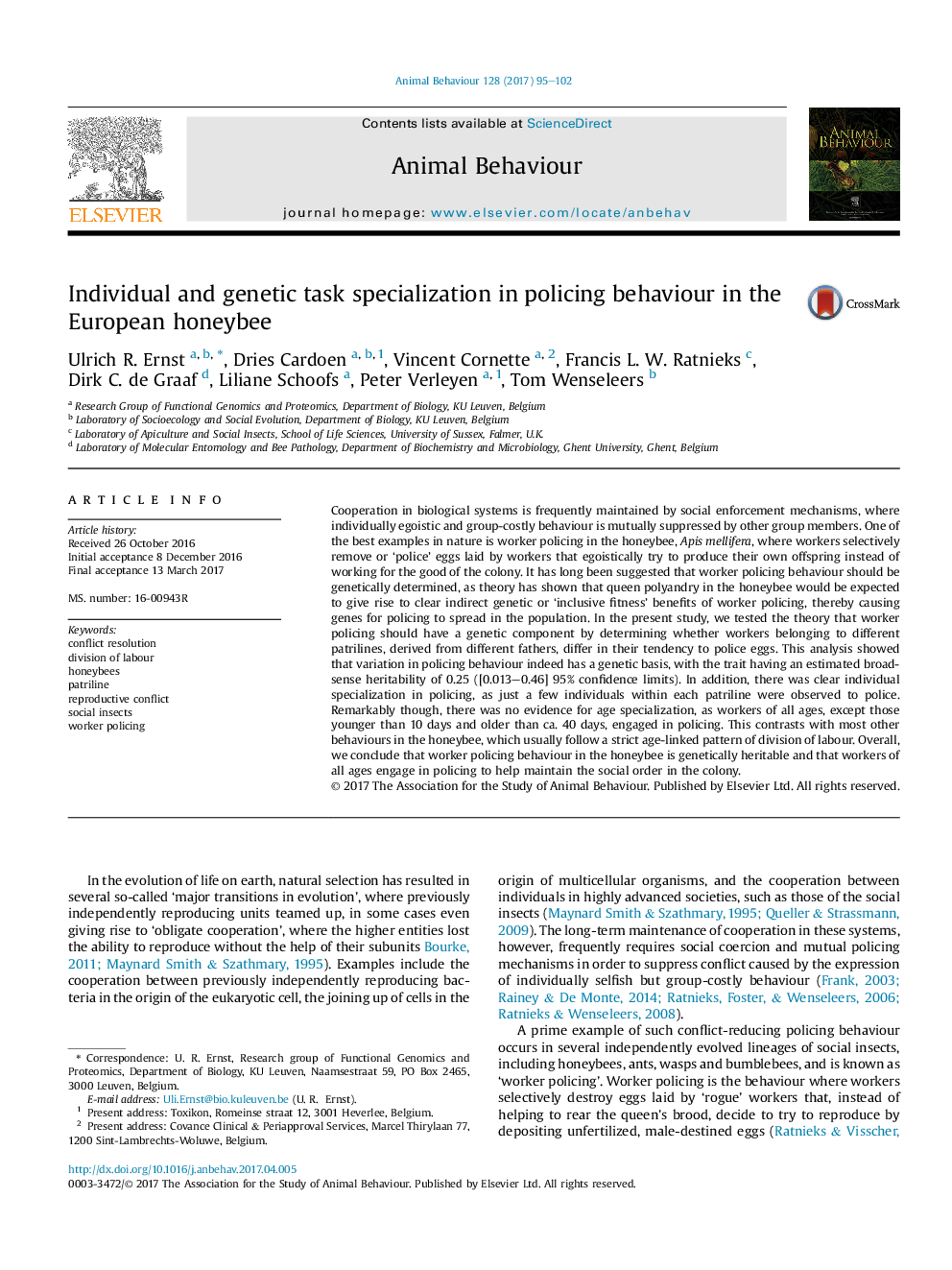ترجمه فارسی عنوان مقاله
تخصص فردی و ژنتیک در رفتار پلیس در زنبور عسل اروپا
عنوان انگلیسی
Individual and genetic task specialization in policing behaviour in the European honeybee
| کد مقاله | سال انتشار | تعداد صفحات مقاله انگلیسی |
|---|---|---|
| 104628 | 2017 | 8 صفحه PDF |
منبع

Publisher : Elsevier - Science Direct (الزویر - ساینس دایرکت)
Journal : Animal Behaviour, Volume 128, June 2017, Pages 95-102
ترجمه کلمات کلیدی
حل اختلاف، تقسیم کار، زنبور عسل، پاتریلیک، اختلال تولید مثل، حشرات اجتماعی، پلیس کارگری،
کلمات کلیدی انگلیسی
conflict resolution; division of labour; honeybees; patriline; reproductive conflict; social insects; worker policing;

